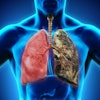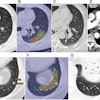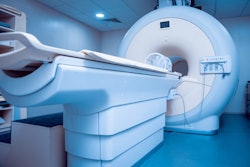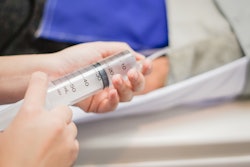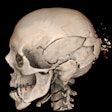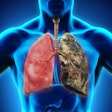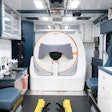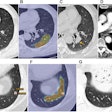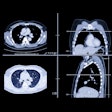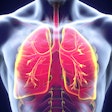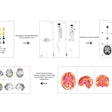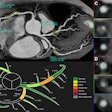Using an iodinated contrast media (ICM) reduction strategy -- particularly one driven by AI -- could curb carbon emissions by 53% and ICM-related costs by 50%, according to a modeling study published October 2 in the Journal of the American College of Radiology.
"ICM is a major and modifiable contributor to healthcare carbon emissions," wrote a team of investigators led by medical student Derrik Nghiem of Oakland University William Beaumont School of Medicine in Rochester, MI. The study's corresponding author is Florence Doo, MD, of the University of Maryland in Baltimore. "To guide implementation, we developed a decision-making framework that categorizes strategies based on environmental benefit, cost, and operational feasibility, enabling radiology leaders to align sustainability goals with institutional priorities."
ICM is a "substantial and modifiable contributor to imaging-related carbon emissions, with mining and clinical use as the dominant sources across the supply chain," the team noted, explaining that iodine is a finite resource and that diagnostic ICM makes up about 24% of its consumption. (The world's largest suppliers are Chile, Japan, and the U.S.) Causing even more concern is the possibility of supply chain disruption, as occurred in 2022.
"Imaging utilization is predicted to double over the next decade with expected associated increase in ICM, highlighting the parallel importance of ICM supply chain stability, environmental impact, and cost," the group wrote.
The researchers sought to investigate the potential of economic and environmental reduction iodinated contrast media (ICM) saving strategies via a study that examined supply chain data (from raw material extraction and pharmaceutical processing through packaging and distribution and administration) to create a decision-making framework that could be tailored to an institution's ICM use reduction goals, allowing radiologists to compare ICM strategies by cost, emissions, and operational feasibility.
Nghiem and colleagues set as a reference a 100 mL vial of ICM and modeled three strategies: vial optimization, AI-enabled hardware or software dose reduction and/or the use of photon-counting CT (PCCT), and multidose vial/injector systems. Overall, they found the following:
- The supply chain life cycle of a 100 mL iodinated contrast vial produces 1,029 g CO2e from iodine extraction and clinical use.
- The models of ICM-saving strategies varied widely in emissions reduction, ranging from 12% to 50% nationally.
- While a 125% tariff could increase national ICM-related costs to $11.9 billion, the reduction strategy of AI-enhanced ICM systems could lower this to $2.7 billion.
Comparison of ICM reduction strategies | |||
Type of intervention | Average volume reduction | Percent cost reduction | Strategy-based percent CO2 reduction compared with reference dose |
| Vial optimization | 12% | 12% | 6.4% |
| Use of PCCT | 50% | 49.5% | 26.6% |
| AI-enhanced ICM | 66.5% | 49.5% | 35.4% |
| Contrast reduction | 16.7% | 16.7% | 52.4% |
| Plastic reduction | 93% | -- | -- |
The study findings show promise for tackling the very real problem of ICM use and carbon emissions, according to the investigators.
"By integrating ICM stewardship into clinical practice and strategic planning, radiology can take meaningful steps to leading healthcare sustainability efforts through informed, data-driven decisions," they concluded.
The complete study can be found here.



